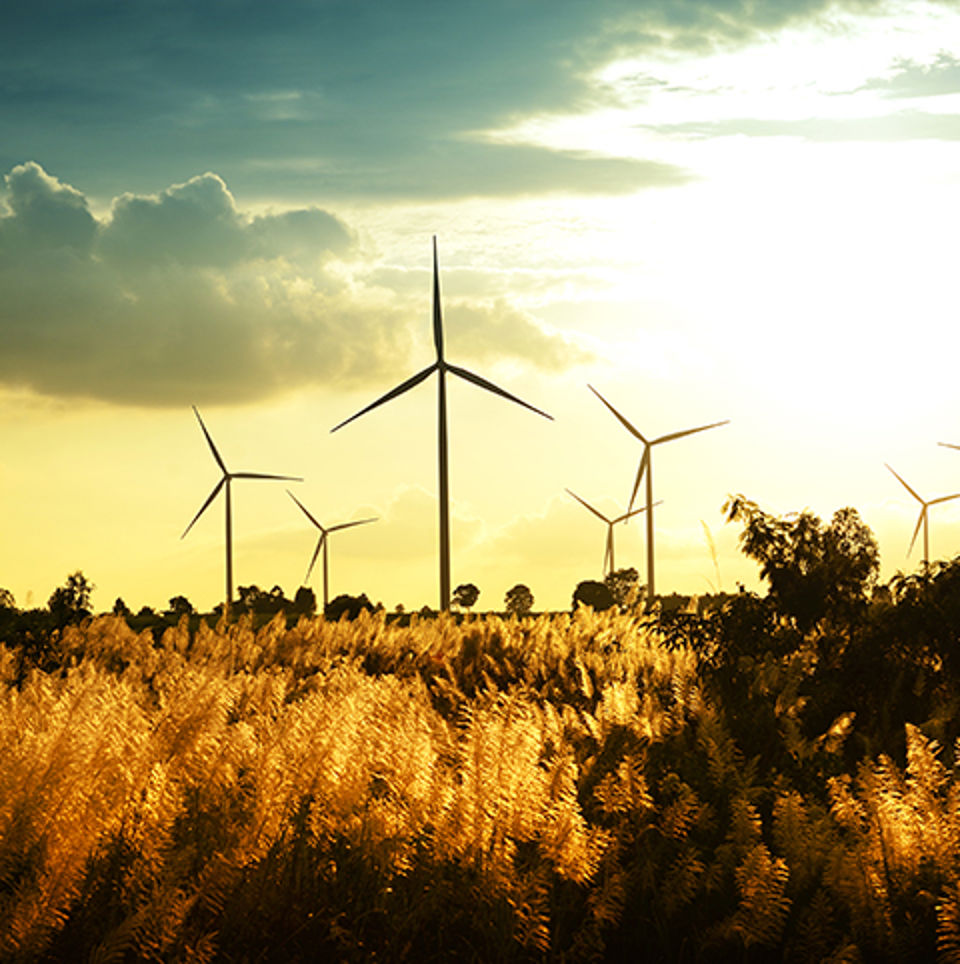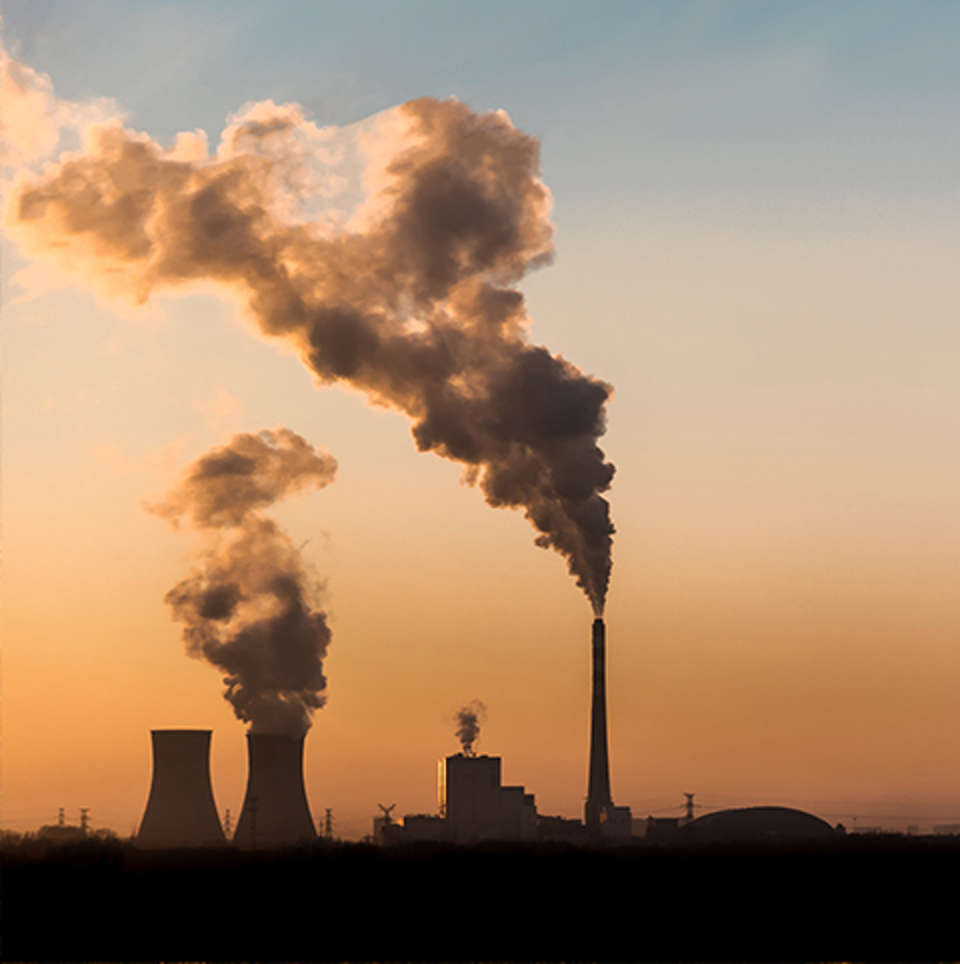Net Zero Roadmap in Detail
The effects of the climate crisis are being felt faster and are more serious than anticipated. Temperatures have reached record levels in recent years, while environmental pollution and biodiversity loss are on the verge of becoming irreversible. Every year, natural disasters are becoming more frequent and destructive.
Our Science Based Target
Our 1.5°C aligned near-term and net-zero targets are offically validated by Science Based Targets initiative (SBTi).
With its approved science-based targets, Arçelik commits to reach net-zero greenhouse gas emissions across the value chain by 2050. As near-term goals, Arçelik aims to reduce its absolute Scope 1 and 2 emissions by 42% in 2030 compared to a 2022 base year, and Scope 3 emissions from use of sold products by 42% for the same time frame. As the long-term targets, Arçelik commits to reduce its absolute Scope 1,2 and absolute Scope 3 GHG emissions 90% by 2050 from a 2022 base year. For our 10% residual emissions, we commit to investing in qualified nature and/or technology based carbon removal projects in line with the SBTi Corporate Net Zero Standard.
Net Zero Roadmap in Detail
Commitments through the membership of EP100
Having ISO 50001 certification for all our factories
Doubling the economic output for every unit of energy consumed globally by 2030, compared to 2010
To achieve our energy and climate goals, we continuously invest in energy efficiency solutions across our operations. These efforts focus on enhancing performance in key areas such as insulation, waste heat recovery, transition to energy-efficient motors, and the optimization of systems including compressed air, heating, ventilation, air conditioning, and lighting. These projects help us prevent GHG emissions as well as obtain financial savings and decrease our energy intensity.
Our target is increasing the ratio to 100% in all countries where we have manufacturing facilities by 2030.
At Arçelik, we use an internal carbon pricing mechanism in order to identify investment costs more accurately by taking into account a possible climate transition scenario where Emissions Trading Systems (ETS) or a potential additional cost mechanism for some raw materials may come into force within the framework of the EU Green Deal. Considering these scenarios and implementing an internal carbon pricing mechanism as a strategic decision-making component related to capital investments paves the way for reducing financial risks that may arise in the short and medium term.
The solar panel manufacturing facilities have fully automated production lines, and the solar panels are manufactured by automated and AI (Artificial Intelligence) integrated machines and robotic arms. We use Industry 4.0 applications and Manufacturing Execution System (MES) for product traceability and high-quality standards. These facilities are also capable of producing future cell technologies such as TopCon* and Heterojunction**
We designed our business model to offer turnkey solutions for household and SME (Small and Medium sized Enterprise) solar energy customers through our home appliances and heating, ventilation, and air conditioning (HVAC) dealers.
*Topcon: Type of a solar cell production method, called as Tunnel Oxide Passivated Contact.
**Heterojunction: Type of a solar cell production method. Heterojunction solar cells combine monocrystalline and thin-film technology.
For further information regarding the targets and the actions already implemented towards Arçelik’s Net Zero target, and solar business, please refer to Arçelik Sustainability Reports.
For detailed information, please see Arcelik’s Climate Change Strategy.
Climate Risk Management
In order to ensure the top-level oversight of climate-related risks, the Board Member who is also Koç Holding Consumer Durables’ President has been tasked with reporting the ESG-related issues to the BoD and overseeing the climate-related risks. The Board Level Early Detection of Risk Committee has also been appointed as the highest-level committee responsible for the oversight of ESG risks and opportunities.
Being a Taskforce on Climate-related Financial Disclosures (TCFD) signatory and an adopter of IFRS ISSB standards, it is essential for the Company to integrate the risks arising from the climate crisis into the Enterprise Risk Management System to execute the relevant action plans in line with the Company’s Net Zero 2050 strategy and corporate sustainability strategy. Thus, Arçelik Enterprise Risk and Insurance Management Directorate and Sustainability Department work in close coordination to identify, evaluate, measure and prioritize ESG related risks and opportunities and integrate the material topics into the Arçelik’s risk matrix.
The Sustainability Department is responsible for qualitative-quantitative identification of climate-related and other ESG risks based on scenario analyses in terms of both physical and transition risks and reports such risks to the Enterprise Risk and Insurance Management Directorate. Enterprise Risk and Insurance Management Directorate includes these risks in its reports to the Board-level Early Detection of Risk Committee at least two times a year. By supporting the TCFD and IFRS ISSB, we aim to strengthen the link between climate change and the resulting financial impacts on our business. Sustainability risks, including climate-related physical and transition risks are considered in the evaluation criteria of business decisions.
The Sustainability Council (SC), chaired by the CFO is the highest management level committee responsible for assessing and managing climate -related risks and opportunities and gathers quarterly to shape the strategy going forward. The Chief Sustainability, Quality & Customer Care Officerserves as the highest-ranking individual with responsibility for assessing and managing climate-related issues and execution of the entire sustainability strategy at the management level in the Company.
For further information regarding sustainability related risks and opportunities with their detailed description and impact analyses, please refer to Arçelik Sustainability Reports.
You can also refer to Arçelik’s Climate Change Strategy.
We are closely following laws and regulations regarding climate change, circular economy, digitalization, and sustainable product criteria policies and strategies. We also play an active role in contributing to the formation of opinions on these laws and regulations with the organizations of which we are members* of such as, DigitalEurope, APPLiA, AMDEA etc.
*Please refer to Arçelik Sustainability Report, “SELECTED MEMBERSHIPS AND ARÇELİK’S CONTRIBUTIONS” for breakdown of the payments made to trade associations for managing our business, the % of payments and why the association is important for us. Please note that these payments are not related to any political campaigns or lobbying activities.
As a company with approved Science Based near term targets, and a Science Based Net Zero 2050 commitment in place to set science-based net zero targets, Arçelik is highly committed to act in line with the goals of the Paris Agreement. Therefore, in its relations with stakeholders including but not limited to trade/industry associations, coalitions, NGO’s, suppliers, B2B customers, Arçelik commits to act and cooperate in line with the necessities of the Paris Agreement. Our sector related engagements and representations in the leading and major trade/industry associations are monthly reported to the top management. To the best of our knowledge, the leading and major industry associations that Arçelik has membership have no contradicting opinions against the Paris Agreement criteria. In case such contradicting opinions arise, Arçelik commits to not be part of any organization or cooperation that would divert its mission away from transition to a low carbon economy, aiming for a net zero world no later than 2050. On top of this, Arçelik tries to be in line with international climate-related initiatives and regulations and clearly declares its position against against these such as the European Green Deal, Emission Trading System (ETS), Carbon Border Adjustment Mechnasim (CBAM), Ecodesign for Sustainable Products Regulation (ESPR) and so on.
For detailed information, please see Arçelik’s Review on Industry Association Memberships.
Building on Arçelik’s global approach to stakeholder engagement, Arçelik carefully manages its engagement with public institutions, non-governmental organizations, sectoral institutions including but not limited to climate change specific issues.
For detailed information, please see our Global Sectoral Relations Management & NGO Membership Policy Document.
Supplier ESG Program
We are eager to transform all together with our supply chain and minimize the impact of the operations in the value chain in total. Therefore, it is important that we help and guide our suppliers to set environmental targets, measure their progress, and reduce their impact. Thus, we developed a Supplier Sustainability Data Monitoring and Development Program. Through this program, we are sending our suppliers a survey with a list of both qualitative and quantitative questions about the ESG issues including climate-related matters. We assess suppliers based on the data provided to understand their level of maturity in terms of ESG integration into their business based on our internal assessment. We also conduct third-party audits to monitor their performance. If any findings signal a potential ESG risk, we provide corrective actions plans to the related suppliers.
For further information, please see our Supplier ESG Program procedure.
“Green Lane”: Rethinking Export Logistics
for a Low-Carbon Future
In the face of growing climate demands, traditional export logistics models—heavily reliant on road transport—no longer align with sustainability objectives. Emission-heavy operations make it clear that a fundamental shift is needed. The challenge is to move beyond incremental improvements and actively redesign our logistics business model around low-carbon transport alternatives. To meet this challenge, we developed a new logistics model called “Green Lane”, focused on minimizing carbon emissions in export operations from end to end. This model represents a deliberate shift in how we design our transport flows—actively choosing greener paths such as rail and seaway shipments over conventional road transport.
As a result of this rethinking, 90% of our products are now transported via sea, which emits significantly less carbon than road transport. For shipments that were previously truck-based, switching to sea reduced emissions by 26%. Beyond this, we also redesigned the supporting stages of sea transport—opting for railways, barges, and electric trucks in the pre- and post-carriage stages—achieving emission reductions of up to 45% in these segments.
The Green Lane project is not just about modal shift—it’s about system change. We're building toward a fully green logistics path, where every stage of the journey, from origin to destination, is optimized for carbon reduction. In the near future, we aim to integrate alternative fuel technologies across the entire transport chain, with the potential to cut emissions by as much as 92%.
By redesigning our logistics model around sustainability, we’ve moved from intention to transformation. The Green Lane project demonstrates our commitment to decarbonizing the supply chain through strategic, long-term planning. With 90% of exports already traveling by sea and hybrid models delivering up to 45% emissions savings, we are actively shaping a business model where low-carbon logistics is the default—not the exception.
“MAASive Shift”: Enabling Sustainable Resilience
through Manufacturing as a Service
Sustainability in manufacturing faces twin pressures: reducing environmental impact while increasing resilience against frequent disruptions. Traditional, asset-heavy production models lack the agility and resource efficiency needed for today’s volatile world. Companies must now transition to greener, more circular systems—without compromising operational continuity. The challenge lies in reshaping industrial value chains to be both low-carbon and disruption-ready, with scalable solutions that minimize waste, emissions, and investment risk.
Funded under the Horizon Europe Call: HORIZON-CL4-2023-TWIN-TRANSITION-01, the “MAASive” initiative focuses on transforming manufacturing through sustainability-driven innovation. Central to this transformation is the adoption of Manufacturing as a Service (MaaS)—a concept that enables companies to share and access production resources across a connected network, reducing the need for redundant infrastructure and lowering environmental impact.
Rather than investing in new physical assets, manufacturers can access existing capabilities on demand—improving utilization, lowering emissions from underused facilities, and enabling the integration of circular practices like remanufacturing and take-back services. This model promotes flexibility without environmental trade-offs.
MAASive also helps companies rapidly recover from disruptions by reconfiguring value chains through digital tools that assess impact and identify low-carbon alternatives in real time. Instead of reverting to carbon-intensive emergency logistics or resource-heavy expansions, companies can dynamically shift to greener, pre-vetted service providers within hours or days.
By aligning resilience with sustainability, MAASive offers a new pathway for European industry: one that supports circularity, shortens time-to-market, and dramatically reduces the carbon footprint of manufacturing.
MAASive offers a sustainable model for industrial resilience. By replacing static, resource-heavy production with flexible, service-based value networks, the project helps reduce carbon emissions, optimize resource use, and embed circular principles into supply chains. As companies reconfigure around shared capabilities rather than owned infrastructure, the result is a lower-carbon, more adaptive, and future-ready manufacturing ecosystem—fully aligned with the EU’s green transition goals.
Real-Time Emissions Visibility in Logistics: ALBA
and Logistics Visibility Platform Integration
Achieving sustainability goals in logistics depends on accurate, timely emissions data. Traditional, modeled data lacks the precision and immediacy needed to monitor carbon output effectively. Manual tracking processes limits visibility, delayed action, and makes it difficult to identify high-emission routes. This creates a gap between sustainability ambition and operational reality.
To close the data gap and strengthen sustainability in logistics, the ALBA and logistics visibility platform were implemented and expanded to provide real-time tracking of both road and seaway shipments. This marked a shift from estimated or modeled carbon data to actual, real-time emissions data. By integrating all logistics stakeholders on a single digital platform, the system delivers live insights into vehicle movement and shipment performance. Real-time tracking allows the identification of carbon-heavy routes as they occur, enabling proactive interventions to reduce emissions. AI-powered features forecast arrival times, issue alerts for delays or inefficiencies, and generate detailed carrier performance reports—all contributing to lower fuel use and better emissions control. The automated, centralized data collection improves reliability and eliminates manual tracking, which not only enhances operational efficiency but also builds the foundation for scalable carbon footprint monitoring. With this visibility, the company can prioritize emission-reduction opportunities and embed environmental accountability into logistics decisions.
The transition to real-time emissions data has significantly advanced logistics sustainability efforts. The platform enables continuous, accurate monitoring of carbon output and provides the operational agility to respond quickly to emission-intensive patterns. This proactive, data-driven approach strengthens carbon accountability across the supply chain and supports the company’s broader net-zero goals.

Energy Efficiency
We track and improve the operational energy efficiency by identifying areas that require upgrades through effective audit mechanisms.

Renewable Energy Technologies
Producing and purchasing renewable energy has an important role in reducing Scope 1 and 2 GHG emissions.

Carbon Pricing
As Beko, we have been using the Implicit Carbon Price Model since 2010 to measure the low-carbon transition impact of applied energy efficiency projects and investments.

Greenhouse Gas Emissions in The Value Chain
In line with our strategy to combat climate crisis, we have set greenhouse gas emission reduction targets and we aim to increase awareness across all stakeholders.